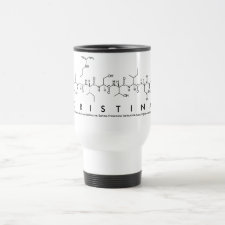
Authors: Baggiani C, Anfossi L, Baravalle P, Giovannoli C, Giraudi G
Article Title: Molecular recognition of polycyclic aromatic hydrocarbons by pyrene-imprinted microspheres.
Publication date: 2007
Journal: Analytical and Bioanalytical Chemistry
Volume: 389
Issue: (2)
Page numbers: 413-422.
DOI: 10.1007/s00216-007-1318-8
Abstract: Pyrene-imprinted microbeads that display molecular recognition towards polyaromatic hydrocarbons (PAHs) were obtained by the aqueous suspension thermopolymerization of a mixture of template, 4-vinylpyridine and divinylbenzene in the molar ratio of 1:8:40. The microbeads were packed into an HPLC column and the retention behaviour of pyrene in the presence of eluents of increasing polarity was investigated by measuring the binding capacity and the imprinting factor. Selectivity was evaluated by eluting pyrene and 22 other related PAHs in the HPLC column when equilibrated with acetonitrile - dichloromethane 4:1 (v/v). Twelve molecular descriptors were calculated for each PAH molecule: MW, the molecular weight; SAS, the solvent-accessible molecular surface area; Svdw, the van der Waals molecular surface area; Vol, the van der Waals molecular volume; MOv, the molecular ovality; RG, the radius of gyration; B/L, the breadth-to-length ratio; μ2, the square of the total dipole moment; HOMO, the highest occupied molecular orbital; LUMO, the lowest unoccupied molecular orbital; Δ orb, the absolute value of the difference between the HOMO and LUMO; log P, the logarithm of the n-octanol - water partition coefficient. Quantitative structure - retention relationships between the logarithm of the capacity factors and these descriptors were searched for using a multiple linear regression (MLR) method. The best regression models obtained showed that the capacity factor correlated well with those molecular descriptors which had structural character, such as logP, while the effect of the molecular descriptors with electronic character was negligible. The results obtained indicate that the molecular recognition of PAHs by the imprinted polymer is controlled by the shape and dimension of the binding sites through hydrophobic interactions
Template and target information: pyrene
Author keywords: molecular imprinting, molecular recognition, Pyrene, polycyclic aromatic hydrocarbons, Quantitative structure-retention relationship



Join the Society for Molecular Imprinting

New items RSS feed
Sign-up for e-mail updates:
Choose between receiving an occasional newsletter or more frequent e-mail alerts.
Click here to go to the sign-up page.
Is your name elemental or peptidic? Enter your name and find out by clicking either of the buttons below!
Other products you may like:
 MIPdatabase
MIPdatabase









